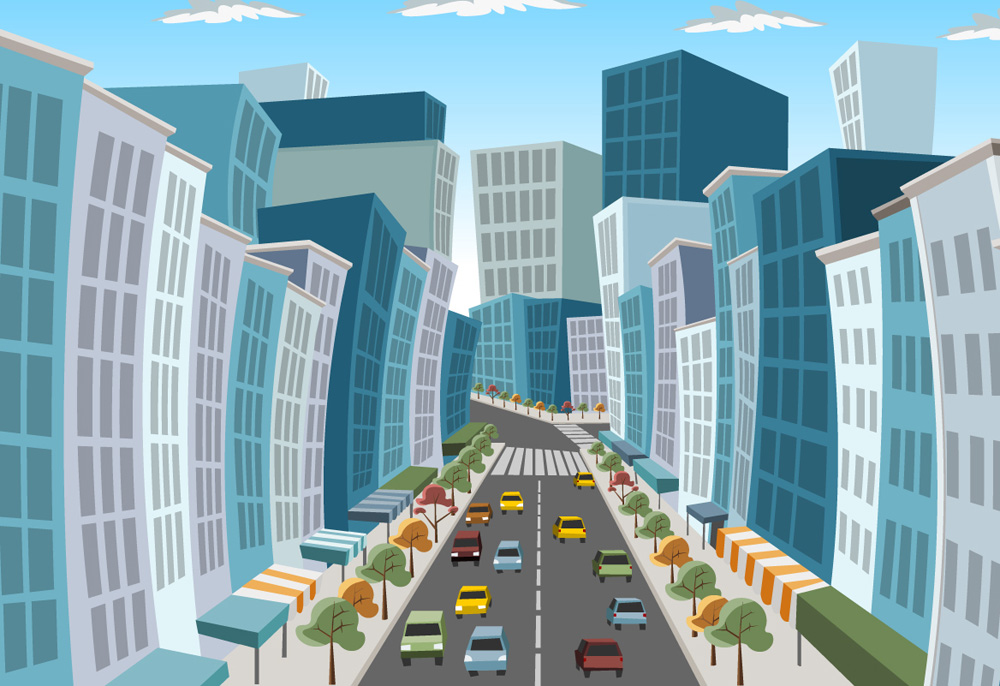Our way of life has become unsustainable. We are facing serious challenges such as increasing urbanisation, an unprecedented rate of population growth and, according to a
survey of 750 experts conducted by the World Economic Forum in 2016, a disaster caused by climate change is currently the biggest potential threat to the global economy. We desperately need solutions to confront these challenges and to make our existence on this planet less harmful.
Yet cities are growing at an alarming rate. It is predicted that 56% of the world’s population will be living in urban areas by 2020. This presents significant challenges for the infrastructure of current and future cities, which need to be able to accommodate this influx of people as well as meeting their rising demand for energy, transport, water and healthcare. Therefore, the way we shape and develop our growing cities will be critical to ensuring a sustainable future. At the same time, we need to make sure these cities of the future are about more than finding solutions to the environmental and demographical challenges of today. The focus should be on how smart technology and the power of big data will allow us to bring real benefits to society and positively impact people’s lives.
The issues facing society today require existing, ageing infrastructure to be transitioned into the ‘smart era’. The introduction of smart, intuitive technology to all elements of infrastructure, capable of autonomously reporting on and responding to its surroundings, will allow the value of real time data to be realised. Cities will gradually take the form of ‘smart cities’ as they become able to react to all of the data being generated within them. However, real innovation is required to make ‘smart cities’ a reality and in order for this to be achieved, governments, businesses and individuals must collaborate to deliver real change.
Smart is the new green
Global energy demand is set to increase by 55% by 2040. Cities consume 75% of global energy and are responsible for the emission of 50-60% of the world’s greenhouse gases. Therefore, with cities set to only expand, the energy industry is faced with the serious dilemma of how to meet this spiralling demand for energy whilst adhering to concerns about both the environmental impact of the production and consumption of energy. Clean energy can help solve this problem, whilst also offering huge opportunities for both governments and businesses to develop and invest in smart technology to make the generation, distribution, consumption and management of energy more sustainable.
However, existing infrastructure and ageing power grids are not innately equipped with the technology capable of integrating this new renewable energy. The digital intelligence involved in ‘smart’ technology is paving the way for renewable energy to enter the mainstream, whilst also enabling it to be consumed and distributed more efficiently. Smart grids, for example, are powered by demand response models which allow real time analysis of customer demand trends. This enables the grid to autonomously respond to the energy demand and control energy distribution to where it is most needed and when. Smart solutions enabled by the introduction of ‘smart’ products and big data will allow the ever-increasing energy demand to be satisfied whilst simultaneously minimising the impact of the environment.
Travelling in the IoT era
With 65.7 million road accidents a year and 7 million deaths from air population worldwide, there is an urgent need to overhaul transport. This is even more pertinent given the projected substantial population growth within urban areas. The opportunity here lies in the interaction between transport and the cities itself. With over 80 million connected devices expected by 2020, the Internet of Things era is set to make a positive impact on all aspects of transport networks. Vehicle-to-vehicle (V2V) and vehicle-to-infrastructure (V2I) communication provides huge opportunities to improve not just road safety and congestion, but passenger comfort. Collectively this communication is known as V2X. V2X will allow vehicles to exploit real time data and connect to transport related infrastructure such as traffic lights and public transport timetables, making travel for city residents more seamless.
At the same time, intelligent solutions to crippling congestion in cities will come in the form of connected traffic signalling systems which can enable dynamic re-routing if necessary, by using probe based and crowd sourced data from road users to create an overview of live traffic conditions. Apps such as CityMapper are currently providing people with up-to-minute updates on the arrival of public transport, reducing waiting times and making travel more convenient. Additionally, as an IEA report has speculated that there could be between 40 – 70 million electric vehicles by 2025, we are well on our way to reducing air pollution levels in urban areas. In the future, as more and more are introduced, this will make smart cities healthier places to live.
Harnessing the power of big data
Smart cities will change the way people interact with their immediate environment, as their smart-enhanced surroundings become more interactive and capable of responding to their needs. Smart cities are not just a concept; they will make a tangible contribution to society whilst mitigating the challenges we are currently facing.




